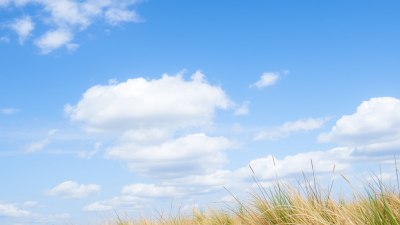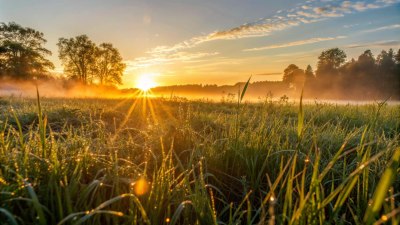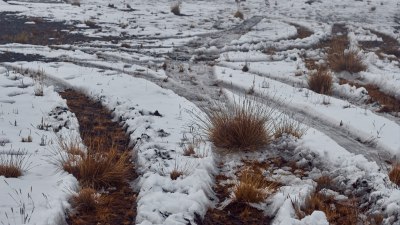How Wind Is Just Nature’s Version of “Not Today”
Explore how wind acts as nature's defiance, influencing climate, ecosystems, and human experience.

This image was created with the assistance of Freepik
Wind is one of the most powerful and invisible forces of nature, constantly at play around us, often taken for granted in our daily lives. From gentle breezes to fierce gales, the wind whispers and roars, reminding us of nature’s capability to assert itself, often with a sense of defiance. Just like a firm but gentle “not today” from nature, the wind challenges our influence and ability to control our environment. Understanding wind not only encourages respect for natural forces but also offers insights into broader ecological and climatic realities, animated by physics and biology alike.
Wind is essentially the movement of air, driven by changes in temperature and pressure within the Earth's atmosphere. This movement stems from uneven heating caused by the sun, which heats different parts of the Earth at different rates. The resulting temperature gradients create areas of high and low pressure, prompting air to move. Hence, the dance of air is a response to the sun's energy, and the planet's geography plays a critical role in how wind develops and moves.
The Science Behind Wind
The physical principles governing wind can be traced back to Newton's laws of motion and the principles of thermodynamics. When warm air rises, it creates an area of low pressure below it, which subsequently draws in cooler air from surrounding regions, resulting in wind. The Coriolis effect, a result of the Earth's rotation, influences wind direction, causing winds in the Northern Hemisphere to veer to the right and those in the Southern Hemisphere to veer to the left. This complex interplay of forces creates various wind patterns, from the calm Zephyrs to roaring trade winds that sweep across the globe.
Earth's geography plays a pivotal role in shaping wind patterns and behaviors. Mountain ranges can act as barriers, causing air to flow over and around them, leading to differing conditions on the windward and leeward sides. Moreover, bodies of water heat up more slowly than land, leading to coastal breezes that are borne from the temperature differences between land and sea. This understanding of wind is critical for meteorologists, who forecast weather patterns and predict storms based on wind behavior, ultimately guiding our responses to weather-related challenges.
Wind’s Role in Ecosystems
Wind is not merely a phenomenon affecting weather; it significantly contributes to ecosystems and biodiversity. Pollination is one such critical function influenced by wind. Many plants, especially grasses and trees, rely on wind for the dispersal of their pollen. This natural mechanism is essential for the reproduction of numerous plant species, thus maintaining genetic diversity and resilience within ecosystems.
Animals, too, adapt to and utilize wind in various ways. Birds take advantage of wind currents to conserve energy while flying, gliding for long distances with minimal effort. Some species, like the albatross, rely heavily on wind dynamics for their migratory patterns. In marine environments, wind-driven waves and surface currents facilitate nutrient distribution, supporting myriad aquatic organisms that contribute to a vibrant underwater ecosystem.
Cultural Reflections of Wind
Historically, wind has captivated human imagination, inspiring countless myths, legends, and cultural expressions. Across different cultures, gods and spirits have been attributed to wind, embodying its unpredictable and sometimes harsh nature. In Greek mythology, Aeolus, the Keeper of the Winds, controlled the gales and storms, reflecting the ancient understanding of wind as something potent and uncontrollable.
Literature and art have drawn extensively from wind’s symbolism. Poets have penned verses contemplating the duality of wind as both a life-giving force and a harbinger of destruction. Similarly, artists have represented wind as a metaphor for change, freedom, or turbulence. These cultural narratives encapsulate humanity’s longstanding intrigue with the wind, reflecting our desire to understand and perhaps tame a force that remains fundamentally wild.
Wind Energy: Nature’s Gift
In the modern context, the power of wind transforms from a natural phenomenon to a valuable resource in our pursuit of sustainable energy. Wind energy harnesses the kinetic energy produced by moving air, converting it into electricity using turbines. This renewable energy source is critical in combating climate change and reducing reliance on fossil fuels, presenting a means for humankind to align our energy consumption with nature’s rhythms.
As technology advances, wind farms proliferate around the globe, taking the place of traditional power generation methods. Onshore and offshore wind energy installations create jobs, stimulate local economies, and reduce greenhouse gas emissions while providing an essential service: sustainable power. Wind energy embodies a harmonious relationship between human innovation and nature, allowing us to utilize its strength without depleting or damaging the very systems we depend upon.
Wind and Climate Change
The relationship between wind and climate change is multifaceted. Wind patterns are evolving due to climate change, amplifying the effects of extreme weather events. As global temperatures rise, changes in atmospheric circulation influence the distribution of wind. Areas that once experienced mild winds may face intensified conditions, impacting everything from agriculture to wildlife habitats.
Moreover, the energy exchange between the ocean and the atmosphere interacts with wind dynamics. The complex feedback loops involved in climate systems modify patterns of rainfall, storm intensity, and wind behavior, making it increasingly crucial to understand and monitor these trends. Investments in meteorological research, climate models, and predictive analytics are vital in addressing the challenges posed by climate change, enabling proactive planning and response strategies.
Personal Reflection and Interaction with Wind
On a personal level, wind can foster a deep connection to the world around us. Be it the gentle caress of a breeze on a warm summer day or the fearsome howl of a storm approaching, our individual experiences with wind evoke emotional responses. From a child's delight in flying a kite to an adult's determination to battle against fierce gusts while cycling, these interactions remind us of our smallness in the face of nature's vastness.
Moreover, mindfulness can be cultivated through a more profound appreciation of wind. Engaging with our surroundings and attuning ourselves to the shifting patterns of air can enhance our awareness of nature’s cycles. Spending time outdoors, listening to the whisper of leaves and the rustle of grass swaying in the wind, can ground us in the present while connecting us to broader existential themes about resilience, change, and harmony.
Embracing Nature's Defiance
To view wind as nature’s way of saying “not today” is to appreciate its inherently rebellious spirit; unpredictable, challenging, yet vital to life's continuum. As we navigate our existence, recognizing the lessons wind imparts can help us adopt a balanced perspective towards nature. Embracing wind’s complexities creates opportunities to learn from its behaviors, adapt to environmental changes, and cultivate sustainable practices that honor the Earth. Nature will always hold dominion over many aspects of our lives, reminding us that our plans may shift, and adaptability is key to harmonizing with the world around us.











